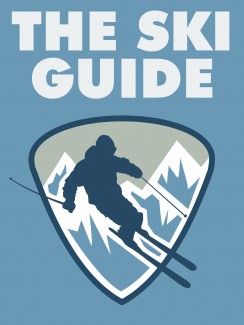 License Type: Master Resell Rights
License Type: Master Resell Rights  File Size: 707 KB
File Size: 707 KB File Type: ZIP
File Type: ZIP
 SKU: 57598
SKU: 57598  Shipping: Online Download
Shipping: Online Download
Ebook Sample Content Preview:
Chapter 8 :
Edging The Skis Confidently
Synopsis
For the more advanced skier, there is the need to fine tune the condition of the skis to create optimum results on every ski run. One of these exercises should include ski tuning which is edging.
Edging The Right Way
Although, for some, this is a rather personalized preference, most skiers ultimately use the manufacturer’s recommendations on the angles with which to vary the edge depending on the brand between one to three degrees. These are the angles the skis are generally designed around, thus giving the skier adequate room to make maneuverable adjustments. In order to start the edging process, the skier requires tools such as a file and a file guide, although free hand edging is possible, it is not really recommended.
While using a visible marker, draw a line where the intended edging is to start and then commence the filing until the mark is no longer visible. This will not only help to indicate the accurate area that should be filed but will also ensure the amount filed is as desired. This is to be repeated on both sides to ensure a proper balance is created by the filing process. Once this has been done, wiping off any edge fragments should be done before the edge grinding is started, and this should be done in similar fashion as the filing. After the edges have been comfortable sharpened, there is a need to run the grinding rubber at about a forty five degree angle for a few inches at the tips and tails. This is to ensure the edges are dull enough to keep from catching an edge on the hill, but will keep it sufficiently edged and sharp under the boot. All this upkeep will ensure the skis are kept in optimum condition, as this will eventually contribute to a safer and enjoyable skiing experience.
er, takes on a more serious connotation, as there are several effecting elements connected to this important part of the skiing motion. Most skiers depend heavily on the ability to harness muscle power and fitness to keep in the skiing position as the balance really comes naturally until the skier is well experienced and relaxed enough to constitute this condition. As the reliance on the power and fitness element decreases, the skier will be more confident and relaxed, thus allowing the natural balance to take over and become more evident in the skiing motions. Keeping the skis about four inches apart, as opposed to keeping them together creates a better balancing stability, although this will be challenging for some as initially the skis may tend to cross frequently.
Although falling is usually a critical part of the learning process, for most people who are able to accept this, it proves to be a good way to help reduce the fear factor and also possible injury in the future. There are ways to fall that should be noted to reduce the level of injury sustained, and this includes falling backwards while using the backside to cushion the fall. Practice doing this by dropping uphill from the skis as relaxed as possible to ensure less likeliness of getting tangled in the skis.
- File Size:707 KB
- License: Master Resell Rights
- Category:Ebooks
- Tags:2016 Ebooks Master Resale Rights








